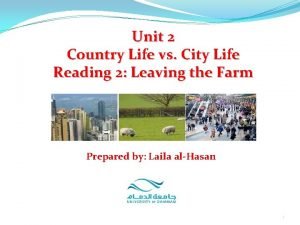Unit 3 Structures of Life Topic How Does










- Slides: 10


Unit 3: Structures of Life Topic: How Does Physical Activity affect the Pulse Rate Learning Target: I can… • Perform an activity to show physical activity affects the pulse rate Standard(s): MS-LS 1 -3. Construct an explanation supported by evidence for how the body is composed of interacting systems consisting of cells, tissues, and organs working together to maintain homeostasis.

Homework Write 1 paragraph to explain how long can a person survive after his heart stops beating? Problem of the Day How would your heart rate would change if your grandma passed away vs. if you won the lotto.

Discussion Questions • Is your heart rate and your pulse rate the same thing • Where on your body can you feel your pulse rate • Turn to p. in text

The Heart The heart is in the middle of your chest but slightly tilted to the left. It is divided into a right & left side with 4 chambers. There are 2 upper and 2 lower chambers. The 2 upper chambers are called the right & left atriums and the 2 lower chambers are called the right & left ventricles.

The Heart is a Pump The heart is a pumping organ. Blood is forced through the arteries as the heart muscles contract and relaxes. This creates a series of waves in the blood as it flows through the arteries. These waves are called the pulse. Your pulse rate is the number of times your heart beats in one minute.

Pulse Your pulse can be felt reasonably well at 7 points on your body (including the center of your chest). They are: 1) your temples (upper sides of your head), 2) the sides of your neck, 3) the center of your chest, 4) the inside of your upper arms, 5) the upper part of your legs at your groin, 6) your wrists, 7) the back of your knees, and 8) at the sides of your foot near your ankle.

Pulse Rate Normal pulse rate varies from person to person but a normal range for adults is 60 – 100 beats per minute. A person’s pulse rate depends on several factors like the individual’s age, body size, heart condition, medical drug use, if the person is sitting or moving, how fit they are, and even the air temperature.

Pulse Rate of Athletes who engage in regular physical activity can have their heart become more efficient and thus reduce their heart rate (pulse rate). This will allow these athletes to engage in physical activity for longer periods of time.

Lab Activity We are now going to perform an activity/experiment in which we will observe how physical activity affects the pulse rate. We will use the COSMOS Technology Toolkit, a heart rate sensor and a timer for this activity. The materials are already assembled on your desks. Get ready and wait for your teacher to tell you to begin
 Homologous structures definition
Homologous structures definition Broad and specific topic examples
Broad and specific topic examples Topic down
Topic down Freetutorical.com harvest land
Freetutorical.com harvest land Unit 10, unit 10 review tests, unit 10 general test
Unit 10, unit 10 review tests, unit 10 general test Project life cycle structures
Project life cycle structures Easy topic about life
Easy topic about life Unit 15 plant structures and taxonomy
Unit 15 plant structures and taxonomy How to calculate time complexity in data structure
How to calculate time complexity in data structure City and country life vocabulary
City and country life vocabulary Farm life vs city life
Farm life vs city life



















